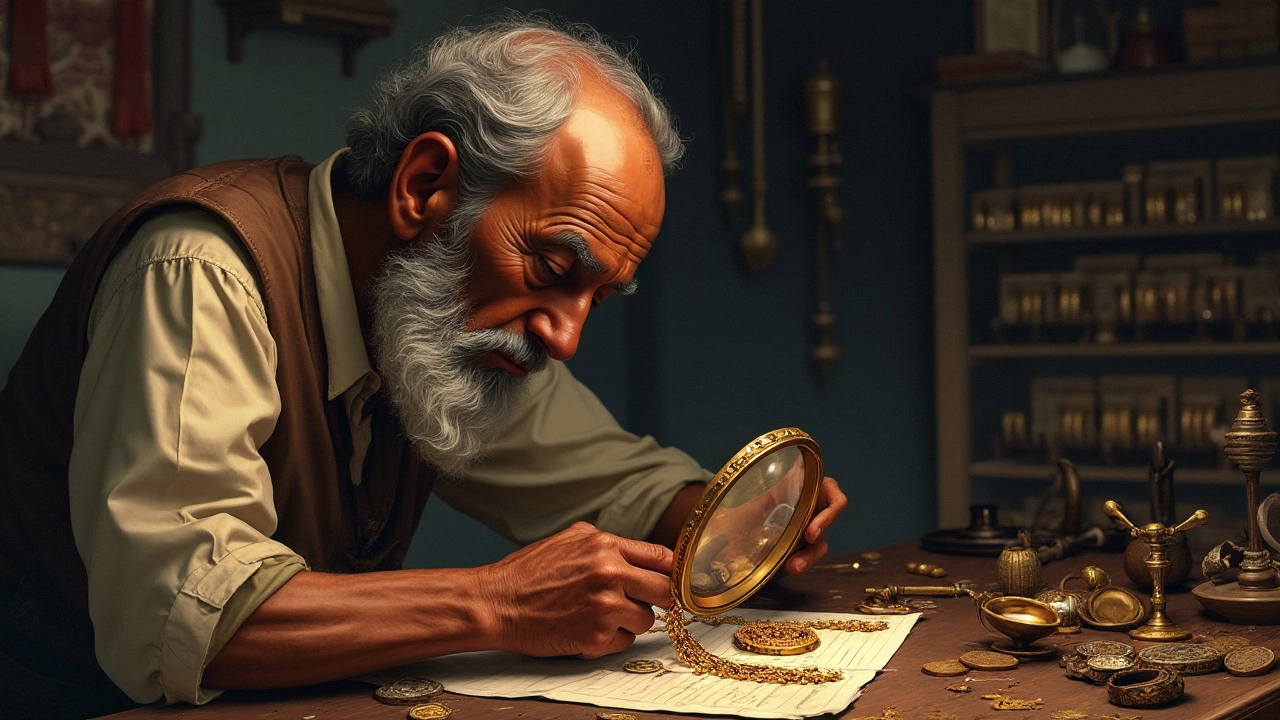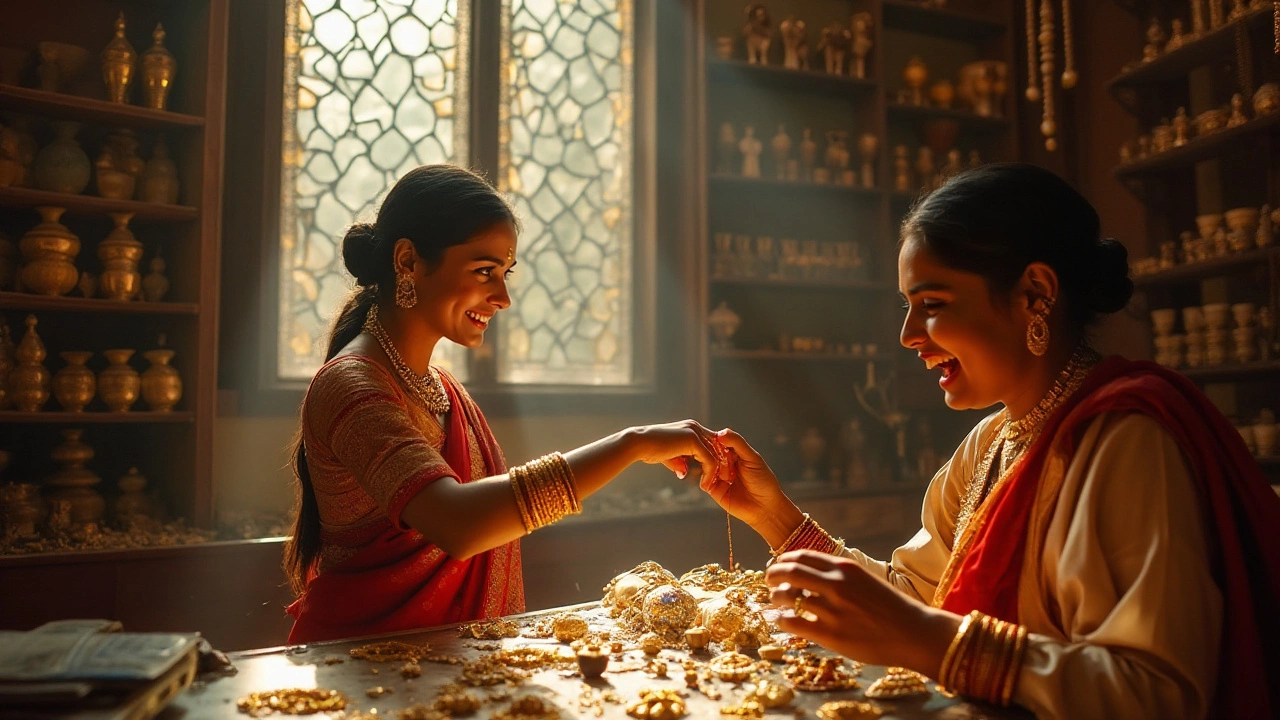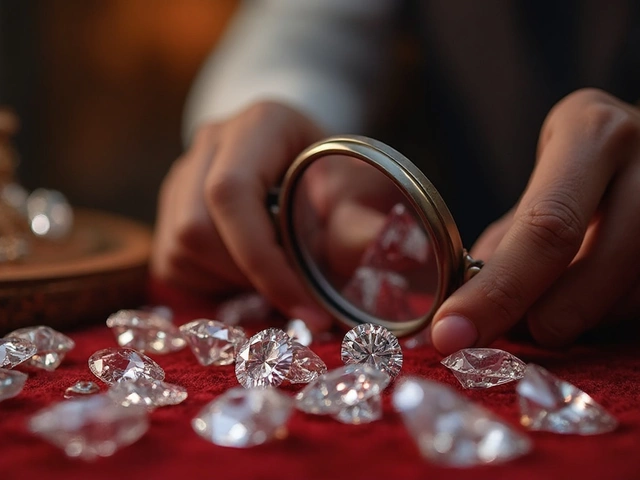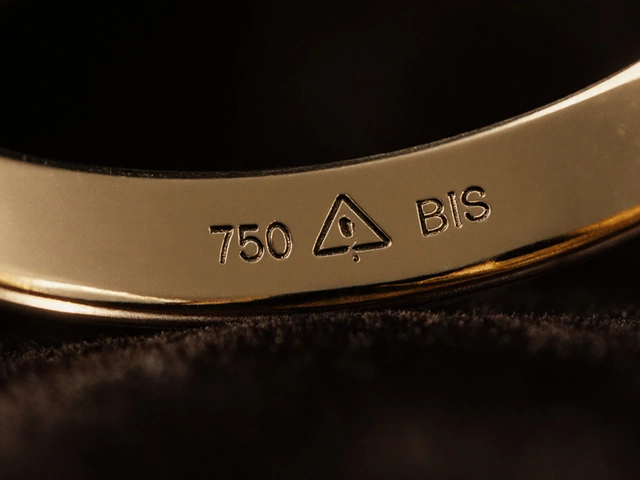Selling antique jewelry can feel like navigating a labyrinth, filled with hidden traps and glittering rewards. Each piece has a history, whispering tales of the past and capturing the attention of collectors and enthusiasts alike. But how can you ensure that you aren't undervaluing your treasures or falling victim to deceitful tactics along the way?
This guide offers insights into unlocking the true value of your antique jewelry and finding creditable buyers who appreciate its worth. From revealing the secrets of identifying genuine antiques to understanding the current market, you'll be equipped with the knowledge needed to make informed decisions. Let's journey together to transform your treasured heirlooms into rewarding investments, safely and successfully without being taken advantage of.
- Understanding the Value of Antique Jewelry
- Finding Trustworthy Buyers
- Identifying Genuine Antique Pieces
- Exploring Different Selling Platforms
- Negotiating and Finalizing the Sale
Understanding the Value of Antique Jewelry
When it comes to antique jewelry, perceiving its actual worth involves more than assessing its aesthetic appeal. It's a blend of artistry, historic relevance, and material value that defines a piece's significance in both personal and market terms. A fundamental step begins with recognizing hallmark stamps, maker's marks, or period-specific characteristics. These details can unveil the era and sometimes even the story behind the item, offering crucial information about its origins.
Similar to how time and polishing enhance a piece's luster, understanding its provenance could also elevate its value. Consider historical influences like Art Nouveau or Victorian periods, which add a priceless narrative dimension. Macquarie University’s Art Institute highlights how such pieces reflect the culture, moral values, artistry trends, and financial statuses from the period they belong to. Experts often recommend a detailed examination by a certified appraiser for an impartial evaluation. Appraisers consider factors like metal quality, the renown of the jeweler, and stone condition to estimate a piece’s worth accurately.
Historical and cultural significance isn't just about age. It’s also about rarity, craftsmanship, and desirability. For instance, jewelry from Tiffany & Co. crafted in the Edwardian era tends to have a higher demand due to its rare designs and renowned craftsmanship. This uniqueness contributes to the piece's market desirability. It's wise to monitor auction results for similar pieces to get a sense of current prices. Online platforms like Christie’s and Sotheby’s often publish auction results, providing priceless insights into current trends and antique jewelry valuations.
“Jewelry, like art, is an investment in beauty. Unlike stocks of companies, it preserves history, holds stories, and often increases in value over time,” declares Dr. Amelia Banks, a leading historian at the Melbourne Museum of Jewelry.
An often overlooked aspect is the emotional and personal story connected to each piece. Though difficult to quantify, sentiment can add a unique layer of perceived value. This might not translate into monetary gain, but understanding its influence helps in appreciating the jewelry’s place in family history or its allure to specific buyers. Balancing the tangible material worth with the sentimental value, some sellers find auctions or sale platforms catering to specific epochs to yield the best outcomes.
To navigate this fascinating marketplace successfully, aim to merge historical wisdom with calculated inquiry. Moving beyond mere market demand, delve into historical relevance and concealed tales each piece may carry. Equipped with this understanding, sellers can more confidently assess their jewelry, ensuring a fair and rewarding transaction. After all, the true essence of selling antique jewelry lies in recognizing its profound link to past and present narratives intertwined with the brilliance of gemstones and gold.
Finding Trustworthy Buyers
Embarking on the journey to sell your antique jewelry necessitates a blend of patience, research, and a touch of instinct. It's a dance between you, the seller, and potential buyers who can truly appreciate the value of your pieces. The market for antiques is bustling with opportunities, but scams and lowball offers lurk around every corner, ready to snatch your prized possessions for pennies on the dollar. To navigate these waters successfully, you need to focus on finding buyers who genuinely cherish the artistry and history in each piece of jewelry you own.
Start by networking within jewelry and antique communities. Attend local and international auctions, and engage with other collectors and sellers. These communities are often close-knit and can provide invaluable insights into reputable buyers who have previously demonstrated a trustworthy nature. Additionally, it's important to familiarize yourself with reputable online platforms. Websites such as Etsy and Ruby Lane offer large audiences and have mechanisms in place to protect sellers from fraudulent activities.
"Research is your best companion," suggested John Henry, a renowned antique jewelry appraiser. "The more you know about your piece and its desirability, the better you will be at finding the right buyer who values its unique essence."
For those preferring a more direct approach, crafting an engaging and informative listing is essential. Highlight the uniqueness and historical significance of your piece. Be honest about its condition and rarity, as transparency builds trust with potential buyers. Always include high-quality images that showcase the intricate designs up close, providing potential buyers with a genuine impression of your item.
Another vital element in securing a sale with a trustworthy buyer is understanding the marketplace's going rate for similar pieces. Online databases and records from past auctions can give you an idea of what buyers are willing to pay. By knowing this, you can set a realistic price for your antique jewelry and weed out unserious buyers who are merely looking for a bargain. Use the following simple steps:
- Research current market prices for similar pieces
- Create thorough and compelling listings
- Engage with active and trustworthy seller communities
- Verify buyer credibility through reviews and past purchase history
Finally, whenever possible, meet potential buyers in a safe and professional setting, such as a jewelry showroom or another public venue. This not only protects you but also provides a formal atmosphere that emphasizes the seriousness of the transaction. Remember that selling antique jewelry is as much about trust and relationships as it is about the value of the pieces themselves. By following these guidelines, you can open doors to rewarding transactions that honor both the history of your jewelry and your trust in the buyer.

Identifying Genuine Antique Pieces
Antique pieces carry with them the spirit of history, each one with stories carved into their very essence. Before you embark on the journey of selling, it's crucial to authenticate the antique jewelry in your possession. Authenticity adds the sheen that delights collectors and ensures the confidence of buyers. The process of verification is an art in itself, starting with recognizing the age and design patterns that mark an era.
First, it’s essential to understand the distinct features of periods such as the Georgian, Victorian, or Art Deco eras. Each of these eras brings unique craftsmanship and materials. Georgian jewelry, for instance, often features intricate hand-crafted designs with closed-back settings. Observe the wear and patina; genuine age lends a softness that cannot be replicated by modern techniques. Expert appraisers often rely on these nuances as tell-tale signs of authenticity, which distinguishes the original from replicas.
"Every piece of antique jewelry provides a tangible link to the past. It's a physical manifestation of history and an echo of art that transcends time." — Renowned Antique Specialist, Louise Baxter
Next, consider hallmarks and maker’s marks, which act like the fingerprints of a piece. They offer invaluable clues about origin, date, and sometimes even the artisan. Employ a loupe or magnifying glass to inspect these tiny engravings. An understanding of hallmark systems, whether they be British, French, or otherwise, is advantageous. Reputable jewelry books often catalog these marks, acting as a reliable guide for amateur enthusiasts and professional appraisers alike.
However, visual inspection isn’t always sufficient. Consider utilizing a gemologist to inspect stones with professional eyes. They can assess whether gemstones have been treated or replaced, a common practice in restoration that affects authenticity. In some cases, obtaining an independent lab certification offers an authoritative confirmation of your item’s authenticity, which adds significant weight to its historical and monetary value.
For those seeking an additional level of confidence, technology can be an ally. Spectroscopy and x-ray techniques may reveal compositional details which indicate the epoch of creation. Some auction houses and museums employ such techniques to authenticate significant acquisitions. To support your selling approach, document these evaluations, including photographs and written assessments, as part of your portfolio.
Engaging with the community of collectors, dealers, and historians can also provide insights. Attend exhibitions and antique fairs to learn from peers, allowing interactions to nurture your understanding. Such engagements foster a deeper appreciation and awareness of authenticity, enhancing your ability to identify genuine pieces. Remember, knowledge is power, and the more detailed your understanding, the better prepared you'll be to make informed selling decisions.
Exploring Different Selling Platforms
When it comes to selling your antique jewelry, choosing the right platform is as crucial as understanding its value. The market is vast, and each platform offers its own set of advantages and drawbacks. Let's uncover the hidden gems among these selling platforms and strategize how to land the best deal for your treasured pieces.
Online marketplaces like eBay and Etsy have become popular options for selling antique jewelry due to their wide reach and ease of use. These platforms allow you to showcase your pieces to a global audience from the comfort of your home. However, it's important to invest time in creating an appealing listing. Detailed descriptions, high-quality photos, and honest disclosures about condition and provenance can significantly impact your sale. To protect yourself from fraud, be sure to verify buyers and transact through secure payment methods.
Specialized websites such as Ruby Lane or 1stDibs cater specifically to antiques and vintage goods. They can attract more targeted buyers, often well-versed in antique jewelry. While these platforms may require sellers to meet certain criteria or pay listing fees, the potential for higher selling prices often justifies the costs. In “Antique Trader,” an expert pointed out,
"Dedicated antique platforms offer communities that appreciate and understand the nuanced beauty of vintage finds, making them ideal for niche sellers."
Outside of the digital realm, local auctions and estate sales present exciting opportunities to sell antique jewelry. These traditional avenues benefit from the immediate connection between seller and buyer, and experienced auctioneers can help appraise and set appropriate starting bids. If considering this route, research local auction houses with expertise in jewelry and check their reputation. Direct contact with collectors at estate sales or antique fairs can result in quicker sales and fewer fees, making it an appealing option for those willing to engage in face-to-face negotiations.
Jewelry Stores and Consignment Shops
If you prefer leaving the selling process to professionals, consignment shops or jewelry stores might suit your needs. By entrusting the sale to a reputable shop, you can leverage their expertise, customer base, and marketing acumen. However, prepare to share a part of the selling price as commission. Negotiating terms beforehand can help maximize your returns.
Your Ultimate Choice
The deciding factor in choosing a selling platform often boils down to personal preference, time constraints, and desired profit margins. Are you looking for a hassle-free experience, or do you enjoy interacting directly with potential buyers? Collecting the necessary information and understanding each platform's inner workings will empower you to determine the best solution for your unique antique treasures.

Negotiating and Finalizing the Sale
Every successful sale of antique jewelry hinges on the power of negotiation. Understanding the intricacies of this art can make the difference between a fruitful transaction and one that leaves you feeling shortchanged. The art of negotiation begins with confidence and preparation. Knowing the value of your jewelry not only boosts your negotiating power but also helps in setting realistic expectations. Begin by researching similar pieces in the market; auction houses and online marketplaces can offer valuable insights into current trends and price ranges.
It's crucial to approach potential buyers equipped with a thorough understanding of the piece’s provenance, historical significance, and condition. This background not only justifies your asking price but also positions you as an informed seller. Creating a compelling and factual narrative around the piece can captivate buyers and make them more inclined to agree on favorable terms. As negotiations progress, one effective tactic is to highlight any distinctive features that may not be immediately obvious. Doing so can intrigue buyers, helping to tip the scales in your favor.
Building Rapport with Buyers
Establishing a positive rapport with the buyer is essential. Engage with them in a conversational manner, asking open-ended questions to understand their needs better. By demonstrating genuine interest in their perspective, the insights you glean can help tailor your pitch and further strengthen your negotiation strategy. Often, the human connection can seal the deal as much as the price itself.
"Negotiation, as an art, relies heavily on patience and the exchange of mutual respect," advises noted antique dealer Jonathon Wild.Building this relationship can result in repeat business or even referrals, expanding your network within the antique community.
Finalizing the Sale
Once a mutual agreement comes into view, the next step is to finalize the sale. Ensure all details are laid out transparently to avoid misunderstandings. Preparing a written agreement that specifies the terms of sale, payment method, and any other pertinent details safeguards both parties. An important aspect to remember is the method of payment; secure options such as bank transfers or trustworthy escrow services can prevent future disputes. Once these steps are completed, conclude the transaction efficiently, leaving both parties satisfied and potentially opening doors for future transactions.



